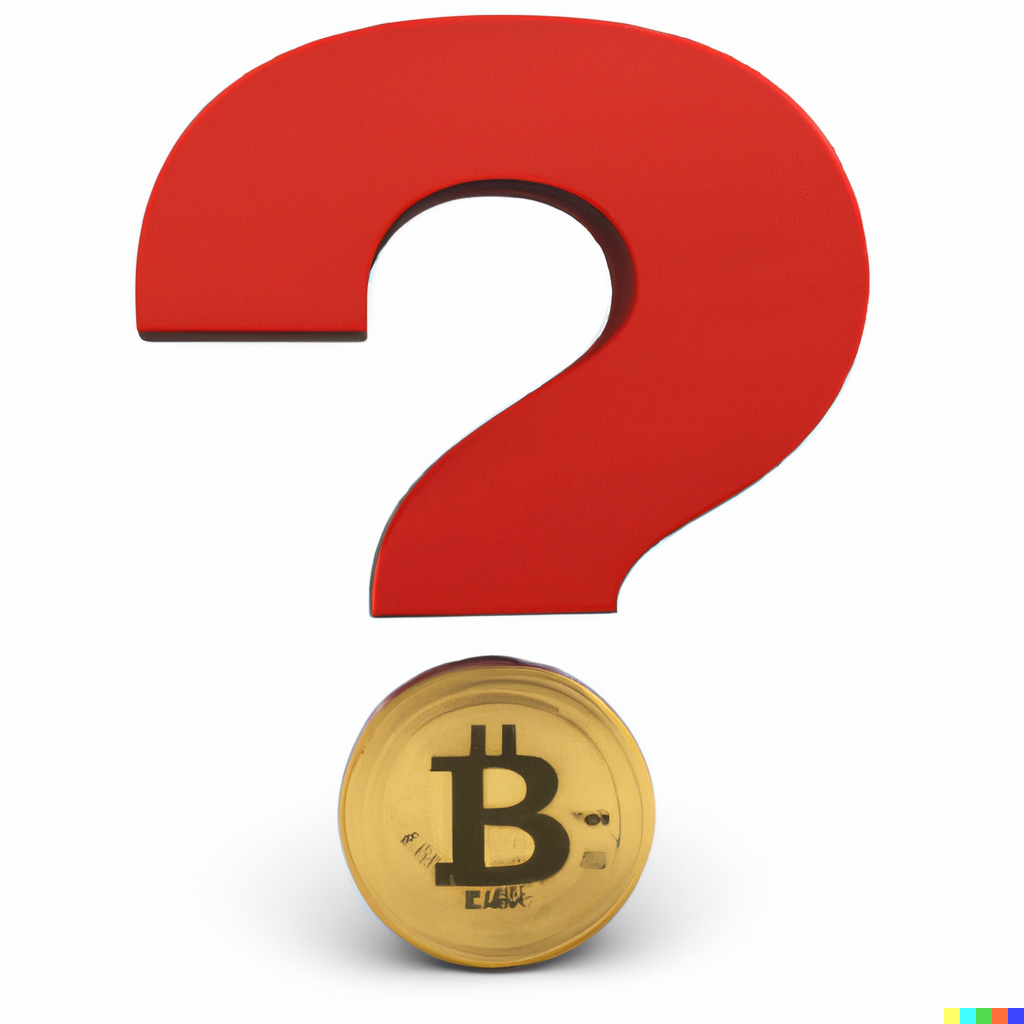There are plenty of misconceptions that exist with Bitcoin today, even with it sticking around for more than 14 years now. Many people are still trying to understand the basics of Bitcoin and its implications on the global financial system.
I’ll tell you from experience: there is a lot to learn. Reading one blog post will not teach you everything you need.
However, I will visit four questions that many ask at the beginning of their bitcoin journey with this essay..
Let’s get into it!

1) How could bitcoin ever become money?
Before I answer this, ask yourself: “What is money?” This is a loaded question that needs to be broken down to first principles.
Money has evolved greatly over the multiple thousands of years humans have existed. Before money, humans participated in barter, exchanging one object for another.
Barter can work great in an economy with limited goods. But what happens, for example, when I want an iPhone, but all I have are apples to trade with the iPhone manufacturer? Let’s say one iPhone is equal to 750 apples. The manufacturer likely doesn’t want 750 apples. But that’s all I have. So, then what?
This is known as the coincidence of wants problem. To solve, humans gravitated towards one object that can act as a medium of exchange. Throughout history, this object has changed time and time again, from items like seashells, to salt, to gold, and now fiat money.
Put simply, money is the most salable good. Salability refers to a good’s relative ability to be sold in a given market at a given time and price. We want a money that can transfer value across time, across space, and across scales.
Widely accepted traits of money include:
- Durability
- Verifiability
- Fungibility
- Divisibility
- Scarcity
- Portability
- Established history
Although established history is still a gray area, bitcoin excels at the rest of these traits. With each passing day, more and more are starting to see it as something that will stick around for the long haul and not just a passing fad.
I would speak more about each of these traits in greater depth, but for the purpose of this article I’ll keep it high-level.
In summary, bitcoin possesses all the traits of a money that humans have historically gravitated towards and agreed upon.
2) Who controls bitcoin and determines the rules?
Satoshi Nakamoto, the pseudonymous bitcoin creator, released the bitcoin whitepaper in 2008 to a public mailing list. The first bitcoin block was mined in 2009.
In 2011, Satoshi posted his last comments on internet forums, never to be heard from again. No one knows Satoshi’s identity to this day.
Without a leader, who controls bitcoin? Instead of a leader, bitcoin has rules that all users must follow to participate in the network. These rules are incredibly difficult to change and require widespread consensus among users, miners, and developers.
Users run computers known as “nodes” that maintain the full ruleset of bitcoin. These computers house every transaction in bitcoin’s history, and a copy of the ledger is contained on each node. Nodes cost around ~$300 to build from scratch and anyone can “spin up” their own node. This capability makes it easy for users to use bitcoin in a trust-minimized way.
Miners expend energy to acquire block rewards. While it can be lucrative, acquiring these rewards requires a significant energy expenditure and initial investment of a few thousand dollars. Like nodes, anyone can plug in a bitcoin mining rig and attempt to win the mining rewards.
Lastly, developers are the shadowy super coders that write the code for various improvements to bitcoin’s software. The software is readily accessible for anyone to verify for themselves.
Bitcoin’s consensus model requires acceptance from all three parties before implementing any large-scale changes. This makes changing bitcoin extremely difficult. Users, miners, and developers are incentivized to play by the current rules, or they risk being considered a bad actor by others in the network.
In summary, no one controls bitcoin, and everyone determines the rules. Bitcoin is a system of rules that you must follow, but no rulers to unilaterally enforce or change those rules.
3) Is bitcoin a bubble or a Ponzi scheme?
Bitcoin will never not be a bubble or Ponzi scheme to most of “Fintwit” and journalists.
Bitcoin is a protocol. It’s a bunch of 0s and 1s. But you know what else is just a protocol at its core? Facebook. The protocol is what brings Facebook – and bitcoin – its value.
You wouldn’t call Facebook a Ponzi scheme, right? Now we can proceed.
Let’s look at a historical example of a bubble – the Tulip Bubble in the 1600s. These tulip prices raised to astronomical levels out of pure speculation. The most expensive tulips traded at a level of 6x the average person’s salary.
This was a bubble. How do we know? Because the bubble burst quickly, with very little external forces popping it besides a shift in subjective value, and the prices never returned to their highs.
This last part is important.
Yes, bitcoin has wild price swings and booms and busts. But, so far, the previous bull market’s all-time high has been reached again and again after prolonged bear markets. Participants continue placing value on the asset, and it continues to draw in new users who also value it.
Bitcoin’s previous all-time high was approximately $69,000 reached back in late 2021. It remains to be seen whether that exchange rate will be reached again. This article is not to be construed as investment advice. But I know which side of that bet I am taking.
As for a Ponzi scheme, bitcoin doesn’t resemble a Ponzi whatsoever. A Ponzi scheme brings in new money to pay off old money. And when the new money runs out, the entire thing collapses.
Price declines do not make something a Ponzi scheme. Many people forget that Amazon stock also had 80% declines in its infancy.
4) Why do people trust bitcoin?
One of the most significant factors that contributes to people’s trust in Bitcoin is its decentralized nature. Bitcoin’s blockchain is a decentralized ledger that records all bitcoin transactions, making it virtually impossible to alter or manipulate the data. There is no one government or financial institution that controls bitcoin, meaning that no single entity has the power to manipulate this ledger.
Ironically, one of the main reasons users trust bitcoin is the fact that there is no one to trust. You don’t put your trust into any leader, government, or corporation. The simple act of not requiring trust is one reason bitcoin is trustworthy.
Another reason why people trust the protocol is bitcoin’s limited supply of 21 million. This differs from traditional currencies with central banks that you must trust not to devalue your currency. Those currencies, due to central bank intervention, are debased repeatedly.
The number of bitcoin that can be mined is fixed, meaning that the value of the currency is not susceptible to devaluation. This makes Bitcoin an attractive savings technology for those looking for a long-term store of value.
Conclusion
The proverbial bitcoin rabbit hole is deep and seemingly never-ending. Although one article won’t tell you everything you need to know, I hope that it will encourage you to learn more.
The gap between the haves and have-nots is only widening. Central control of the money is one large and very obvious reason for that.
Bitcoin can take the power of money out of the hands of the few and redistribute it to the many. You cannot understate the audacity of this idea. I believe we are living through one of the most exciting times in all of human history because of what’s at stake.
Join the fun!
Trent is a CERTIFIED FINANCIAL PLANNER™ at Watchdog Capital. He has a passion for traditional finance and Bitcoin, and is eager to see how the two worlds interact with each other.

